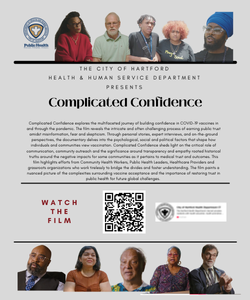By Annabelle Woghiren
The Democratic Republic of Congo is bleeding, physically, violently and alarmingly. Nearly seven million people have been actively displaced, families have been torn apart and it is currently in one of the world’s largest hunger crises, affecting over 25 million people and counting. Their suffering remains largely invisible to the rest of the world, especially to Europe and the ‘western’ world, who view these alarming statistics to be a byproduct of war, insecurity and under-development. However, there is another truth to this story. One which involves you and me, it involves the very devices we use every day, the technology we credit to our advancement, the ‘green’ economy we believe is the key to saving our planet and our economy.
The current situation in Congo dates back to the first Congo war in 1996, known as the first African World War, as Francis Lomami explains. After the Rwandan genocide, the war between Hutu and Tutsi tribes found its way into the Congolese border. After over one million Hutu’s fled Rwanda after the Tutsis took power, several invasions from Rwanda into Congo pursued. This aggression turned into a multi-national, full-blown war, with countries such as Uganda, Zimbabwe, Chad, Sudan and Namibia all fighting in Congo. This war was also expensive, leading to Congolese leaders selling mines to foreigners to ensure they could pay for the defence they required. As a result of this, rebel groups created by Rwanda and other countries with vested interest in the instability of Congo have led major insurgencies and violence to exploit its people and minerals. The practice of selling mines and developing an economy around mining has become a common practice, with both rebel groups and the Congolese government themselves having a stake in it. This practice not only continues but is thriving. Something born from violence, war and instability will develop best in these conditions. Therefore, the presence of armed rebel groups in Congo is connected to this practice of mining and profiting from it. The mines sustain the violence, and the genocide flames the fire.
But why are the natural resources of Congo so important? It is no surprise that the African continent is the richest continent on the earth due to its minerals and resources. One cannot list the abundance of oil found in Nigeria, or the raw diamonds sourced from South Africa. The Congo holds another rich, invaluable resource called Cobalt. As the country with the largest reserve of cobalt in the world, a silver-grey metal often extracted as a by-product of nickel and copper mining, the Democratic Republic of Congo produces a mineral which has been under global demand since World War One. In fact, the production of cobalt has historically increased under the conditions of war, as seen through its production growing between the first and second World Wars. Currently, under constant tension since the African World War, cobalt mine production experiences a growth rate of 20 per cent yearly.
Almost single-handedly, Cobalt is funding technological advancement, funding our ‘green economy’. It is the foundation of our sustainable technologies such as vehicles, smartphones, and laptops because it is a critical component in the production of rechargeable lithium-ion batteries. While to us, Cobalt is seen as a miracle metal which promotes ‘clean’ energy, it has become the vessel of human exploitation and the degradation of the environment. The rush for access to Cobalt is a major reason why Congo is undergoing a humanitarian crisis. It is imperative to connect the dots between the global demand for Cobalt (especially from the most ‘technologically advanced’ countries), geo-political tension in West Africa more largely and the silent genocide that is happening in Congo. Without this, we don’t get the full picture.
The obscenely high rate of displacement is connected to the mining of Cobalt, because communities are being destroyed to make way for the development of new mines. Millions of trees have been cut down, the water has been contaminated with deposits from the mining and the air quality is decreasing rapidly, due to this rise in mining. Furthermore, on these mines, people are working in sub-human, degrading and difficult situations. These people, often include children and other vulnerable people, are mining with their bare hands, being paid less that $2 for the whole day. As the land is destroyed to build a new mine, the people living on the land are forced to become workers on this mine, there is no alternative, no livelihood, nowhere else to work. The mines have taken over everything for these communities. The danger associated with working in these mines are horrific, from the possibility of walls collapsing on top of the miners, to the effects of working with Cobalt without protection – which are hazardous and lead to secondary health effects. This level of degradation and exploitation is a textbook definition of modern-day slavery. The miners live in camps, which are crowded and unsafe, contributing to the horrifying statistic which states that on average, 48 women are raped every hour in the DRC. These mines are the playground for the most salient and dehumanising human rights abuses and exploitations, the demand for Cobalt to fund technological advancement is what makes the world silent, while we all continue to be the beneficiaries of this conflict material.
The global scramble for power through Cobalt is contributing directly to a cycle of environmental degradation, exploitation, greed and genocide. However, the fight is not over. Earlier this year, the International Rights Advocates sought to hold tech giants accountable for forced labour and child labour in Congolese mines. Companies included Dell, Apple, Google and Tesla. All companies named were argued to have gained significant financial advantages from the widespread illegal mining of Cobalt, which continues to enter global supply chains. While they all have the authority and resources to supervise and regulate their supply chains, they failed to do so, resulting in human rights abuses, deaths and injuries. While the claim was dismissed by the US Court of Appeals in March, it teaches us something important.
The fight is not over.
We must turn our eyes to Congo. We must use our voice to tell this story. We must continue to apply pressure to our governments, institutions and systems which continue to unconscionably benefit from the genocide we are seeing before our eyes.
As the memory of the Congolese man who set himself ablaze while holding the placard “Stop the Genocide in Congo” burns into recent history, we are all reminded one thing – Free Congo.





